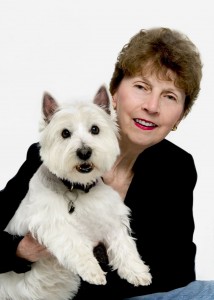Pet Talk
What Do the Spots Mean?
By Frances Goodman
Dear Frances: I have a five-month-old mutt, and am pretty sure he is German shepherd/golden retriever. I have noticed that he has one or two black spots, about the size of a pea, way in the back of his tongue, and one pinkish/brown one on the underside of it.
I am wondering if this means he has some Chow in him? Like a lot of people, I have always heard bad things about Chows and am a little worried. He doesn’t really look like one, and his size and shape do not resemble a Chow in the least.
But still, the black spots make me wonder. Sincerely, R.R.
Dear R.R.: It is not unusual for purebred golden retrievers and their mixes to have black spots on their tongue. Black spots do not necessarily mean Chow-Chow.
I have known purebred Dachshunds, Pomeranians, as well as many mixes that have them.
Of course, a tongue that is totally or predominantly black, gray or purplish would indicate Chow breed or mix.
Chows do have a reputation for being “cross” and some are potentially dangerous. But, generally, when they are mixed with another breed, the unreliable temperament seems to stabilize in the offspring.
Chow mixes can make wonderful pets and are often beautiful in appearance. As with most dogs, the big issue regarding behavior and temperament is how they are treated, trained and socialized by their humans!
As for your puppy, here are some thoughts about golden retrievers and German shepherds:
Goldens, labs and other retrievers mature slowly. They have a long “puppyhood.” Around age two they mature and finally begin to act like a lovely dog instead of a wild puppy.
Shepherds mature at about one and-a-half years.
So be patient with your new pet, who is still a puppy in his mind. I hope you’ll do some training in which you go through the classes together and he gets the benefit of socialization.
Be sure the teacher uses positive reinforcements, and no rough techniques. But don’t expect “treats only” and no corrections to accomplish training.
Dogs naturally want to please us. Our job is to let them know what is and is not acceptable by using the appropriate tone of voice and body language to communicate our rules to them.
A frown and a sharp “no” for unacceptable behavior; soft praise for acceptable behavior, and consistency on the part of the human can work wonders!
Wise dog obedience teachers understand this reality-based balance — and can help owners accomplish this balance as well.
Best wishes to you both!

